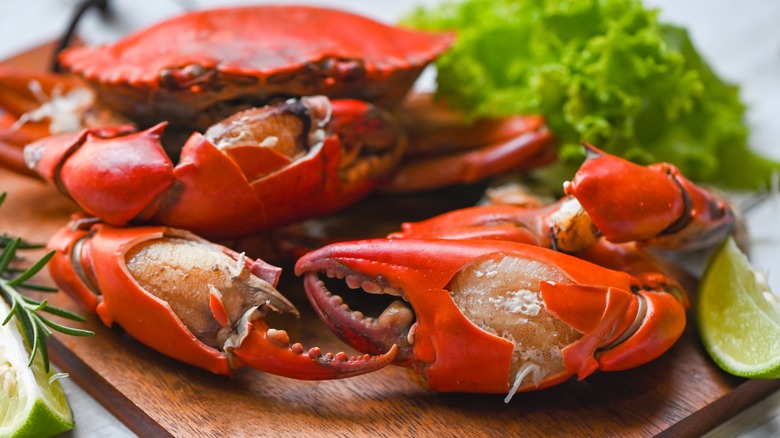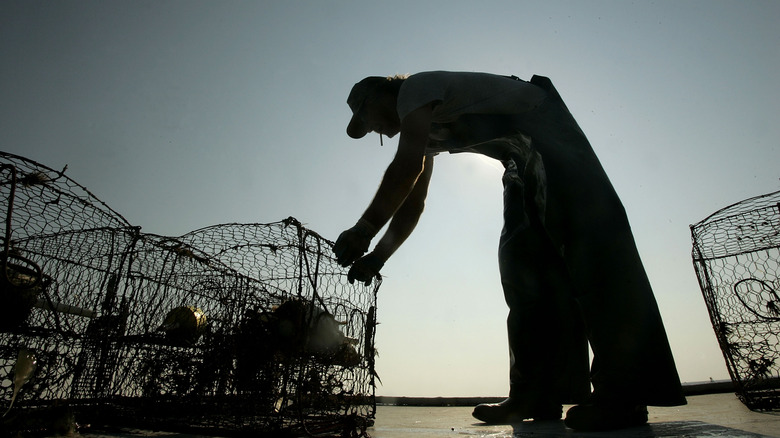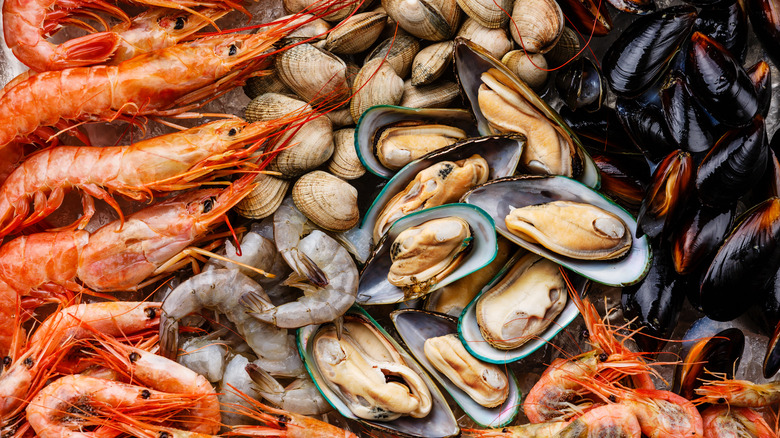The Reason Crab Meat Should Never Be Bought Frozen, According To Chefs
By now, it is generally accepted that, when either dining out or at home, fresh foods are preferable to frozen. This isn't to say that the fresh version is always the most convenient, but when it comes to an ingredient like crab meat, some chefs won't even consider the frozen option. The reason? There are some foods you just shouldn't freeze.
Speaking with Food & Wine magazine, Harley Peet, executive chef of Bas Rouge, mentioned a textural issue that arises when crab is frozen. "[W]hen crab meat is frozen, the cells inside the meat break open, yielding a watery and spongy texture when thawed."
Though most chefs will prefer fresh to frozen, this doesn't change the fact that virtually all restaurants still rely on at least some frozen ingredients. Being able to stock up on certain essential ingredients in your freezer that would otherwise spoil is just one less thing to worry about and often the economical choice. For many of these ingredients, the quality remains the same after they have been thawed. But from the sound of it, crab isn't one of them. The trade-off between quality and convenience simply isn't worth it. Given how tricky crab can be to prepare fresh –- the high amount of labor that is needed to break down this odd, shelled creature and pick a sometimes small amount of meat out of them –- this is saying something.
Region matters
But chef Harley Peet has another reason for shunning frozen crab meat. Those familiar with his restaurant will know that Bas Rouge is located in Easton, Maryland, a town just a stone's throw from the Chesapeake Bay, one of the great boons of blue crab in the United States. With such fresh ingredients just a few minutes drive from his restaurant, there is simply no reason to buy it frozen.
"Being in the crab mecca of the Eastern Seaboard, we are so fortunate to have access to fresh, jumbo lump Maryland blue crab meat, harvested wild from the Chesapeake Bay by reputable fishermen that we personally know," said Chef Peet. "I feel I would be doing a disservice to them, and to our guests, to use anything else."
It stands to reason that chefs on the other end of the country — like those with access to fresh Dungeness fished from Winchester Bay in Oregon –- feel the same way. This is all well and good for those who live and dine along the coasts, but what about those in the middle of the country? What of the transplants from Washington, DC, to Wichita, Kansas? Or from Seattle, Washington, to Fargo, North Dakota? Neither of the latter cities is well-known for its access to fresh seafood.
Shellfish are generally tricky frozen
Of course, there are seafood restaurants in these cities, many of them hundreds of miles from the nearest ocean. Some, like Shaw's Crab House in Chicago, go to the trouble of having a fresh catch flown in nearly daily, which sounds like quite the undertaking.
Chef Peet's original point is still well worth taking into consideration. Freezing causes water to expand, which runs the risk of breaking down the tissues that make up crab meat. Hence the spongy texture. Shellfish generally can be tricky to freeze, and not just for matters of texture and taste. The website for New York City's famous Fulton Fish Market has a page on freezing different forms of shellfish that is full of do's and don't's, many of which concern whether the oyster, clam, or mussel will be safe to eat after thawing it out.
Though crab isn't mentioned on the Fulton Fish Market page, lobster is. The primary warning here is that lobster should never be frozen live, unlike clams, muscles, or other mollusks. Doing so will cause the meat to expand and attach to the inside of the shell during thawing. Therefore, the page advises you to either cook or blanch your lobster before putting it in the freezer. The page also warns against refreezing any shellfish that has been previously frozen and thawed.


